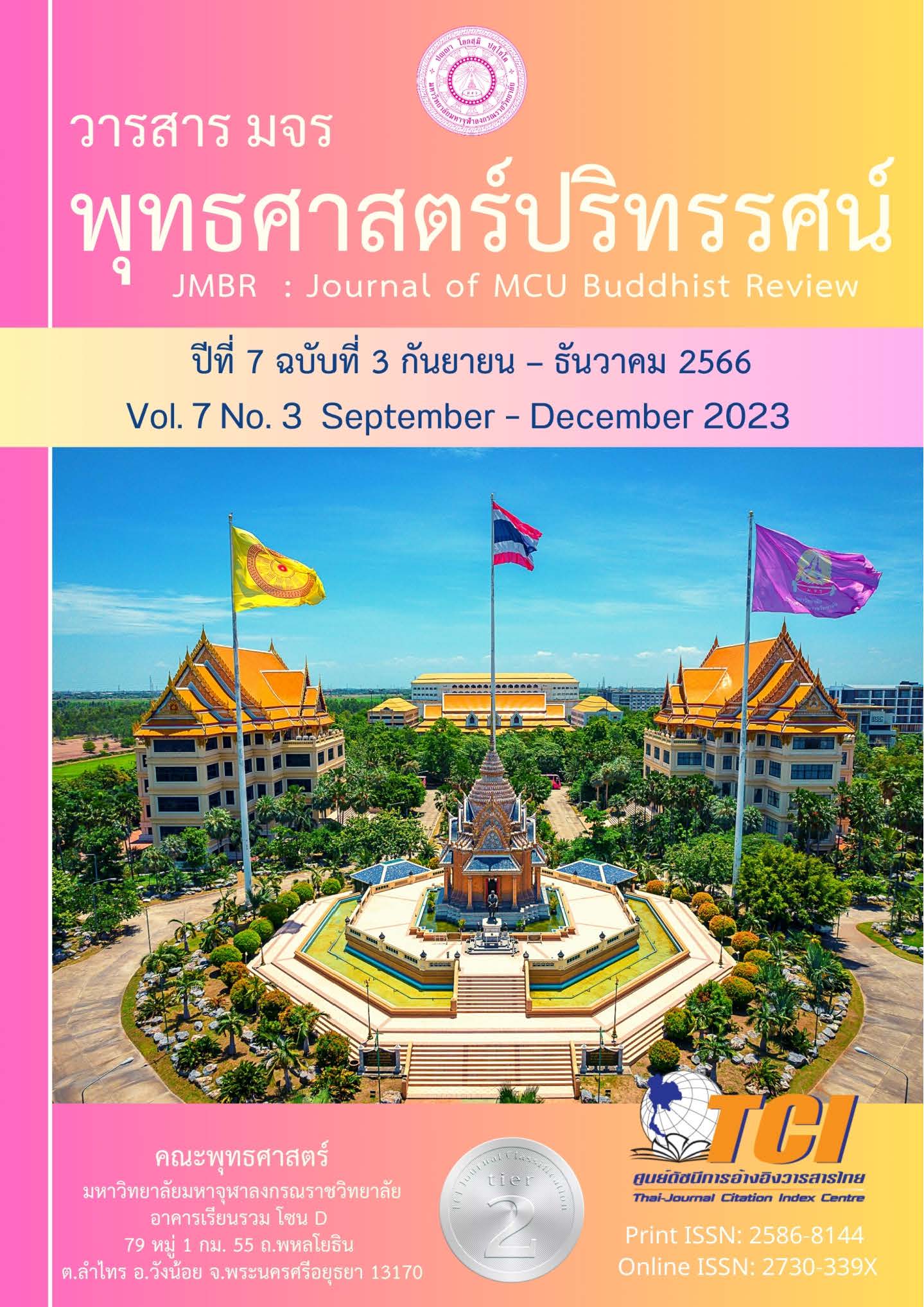การศึกษาเปรียบเทียบรูปแบบการพัฒนาชุมชนอย่างยั่งยืนของชาวพุทธกับชาวมุสลิมเขตเทศบาลสิงหนคร อำเภอสิงหนคร จังหวัดสงขลา
Main Article Content
บทคัดย่อ
บทความวิจัยนี้มีวัตถุประสงค์ 1) เพื่อศึกษารูปแบบการพัฒนาชุมชนอย่างยั่งยืนของชาวพุทธ 2) เพื่อศึกษารูปแบบการพัฒนาชุมชนอย่างยั่งยืนของชาวมุสลิม และ 3) เพื่อเปรียบเทียบรูปแบบในการพัฒนาชุมชนอย่างยั่งยืนของชาวพุทธกับชาวมุสลิมในเขตเทศบาลสิงหนคร จังหวัดสงขลา เป็นการวิจัยเชิงคุณภาพ ศึกษาข้อมูลจากเอกสารและงานวิจัยที่เกี่ยวข้อง สัมภาษณ์เชิงลึก 12 คน วิเคราะห์ข้อมูลและนำเสนอผลการวิจัยเชิงพรรณนา
ผลการวิจัยพบว่า 1) รูปแบบการพัฒนาชุมชนชาวพุทธในเขตเทศบาลสิงหนคร พบว่า (1) มุ่งเน้นพัฒนาชุมชนให้พึ่งพาตัวเองได้ (2) ทำงานตอบสนองต่อสภาพแวดล้อมที่เป็นเอกลักษณ์ของแต่ละชุมชน (3) นำวิธีการพัฒนาที่ได้ผลมาใช้แก้ปัญหาที่สำคัญของชุมชน และกระตุ้นให้เกิดการลงมือทำโดยเฉพาะในประเด็นเกี่ยวกับการพัฒนาเศรษฐกิจ สังคม การศึกษา และสุขภาพอนามัยที่ดี เป็นหนทางนำไปสู่ความเจริญเติบโตให้กับชุมชนอย่างยั่งยืน 2) รูปแบบการพัฒนาชุมชนของชาวมุสลิมในเขตเทศบาลสิงหนคร พบว่า มุ่งพัฒนาคนและสังคมเป็นหลักโดย (1) การพัฒนาให้เกิดการมีส่วนร่วมของชุมชน (2) การเสริมพลังให้ชุมชนเพื่อเป็นแรงกระตุ้นให้เกิดการเปลี่ยนแปลงของชุมชน สิ่งสำคัญคือพัฒนาให้คนในชุมชนเกิดสำนึกความรับผิดชอบต่อท้องถิ่นของตน 3) การเปรียบเทียบรูปแบบการพัฒนาชุมชนอย่างยั่งยืนของชาวพุทธกับชาวมุสลิมในเขตเทศบาลสิงหนคร อำเภอสิงหนคร จังหวัดสงขลา พบว่า ชาวพุทธกับชาวมุสลิมมีทัศนะที่เหมือนกัน คือ การพัฒนาคนให้เข้าใจในหลักของศาสนาและอยู่ร่วมกันในสังคมอย่างมีความสุขได้ โดยต้องมีศรัทธามั่นคงและปฏิบัติตามหลักศาสนาของตนอย่างเคร่งครัดเสมอภาค จึงจะสามารถพัฒนากาย วาจา ใจ ของตนให้เกิดสบายใจได้ ส่วนนัยที่ต่างกันนั้น ชาวพุทธมุ่งหมายการปฏิบัติตามหลักของศีล 5 เป็นเครื่องพัฒนากาย วาจา ใจ ให้เป็นบุญ และก้าวสู่ความสุขอันยั่งยืนคือพระนิพพาน ส่วนชาวมุสลิมมุ่งหมายยึดหลักศรัทธาในอัลลอฮฺ มีพระองค์เป็นผู้ชี้แนวทางในการพัฒนาชีวิต นำมาซึ่งความสุขแบบยั่งยืนสู่สังคมโลก
Article Details

อนุญาตภายใต้เงื่อนไข Creative Commons Attribution-NonCommercial-NoDerivatives 4.0 International License.
- บทความที่ได้รับการตีพิมพ์เป็นลิขสิทธิ์ของวารสาร มจร พุทธศาสตร์ปริทรรศน์
- ข้อความใดๆ ที่ปรากฎในบทความที่ได้รับการตีพิมพ์ในวารสาร ถือเป็นความรับผิดชอบของผู้เขียนบทความ และข้อคิดเห็นนั้นไม่ถือว่าเป็นทัศนะและความรับผิดชอบของกองบรรณาธิการวารสาร มจร พุทธศาสตร์ปริทรรศน์
เอกสารอ้างอิง
จินตวีร์ เกษมสุข. (2559). หลักการมีส่วนร่วมกับการพัฒนาชุมชนอย่างยั่งยืน. พิมพ์ครั้งที่ 2.กรุงเทพฯ: โรงพิมพ์แห่งจุฬาลงกรณ์มหาวิทยาลัย.
ธนัท เรืองรุ่งชัยกุล. (2561). ศึกษาทิศทางการพัฒนา ส่งเสริมและสนับสนุนนวัตกรรมเพื่อสังคมที่เหมาะสมกับประเทศไทย. กรุงเทพฯ: สำนักงานนวัตกรรมแห่งชาติ (องค์การมหาชน).
พระธรรมปิฎก (ป.อ.ปยุตฺโต). (2540). พระพุทธศาสนาพัฒนาคนกับสังคม. กรุงเทพฯ: โรงพิมพ์ท้องถิ่น กระทรวงมหาดไทย.
พระพรหมบัณฑิต (ประยูร ธมฺมจิตฺโต). (2562). ศาสนากับเป้าหมายการพัฒนาที่ยั่งยืน. พิมพ์ครั้งที่ 2.กรุงเทพฯ: บริษัทอมรินทร์พริ้นติ้งแอนด์พับลิซซิ่ง จำกัด (มหาชน).
เมืองโบราณ. (2561). สงขลาหัวเขาแดง เมืองสุลต่านสุไลมาน. วารสารเมืองโบราณ. 44 (4), 20-30.
สอาด ภูนาสรณ์, สมควร นามสีฐาน และอำนวยพร โฮมจูมจัง. (2564). พุทธวิถีไทยสู่การพัฒนาที่ยั่งยืนในยุค NEW NORMAL. วารสารบัณฑิตศึกษามหาจุฬาขอนแก่น. 8(2),18-19.
แสนกีรตินวนันท์ และสิริยา รัตนช่วย. (2562). กลไกขับเคลื่อนสวัสดิการชุมชนเมืองของชุมชนมุสลิมมัสยิดกมาลุลอิสลาม กรุงเทพฯ. วารสารปาริชาต มหาวิทยาลัยทักษิณ. 32(2), 41.
อนุชา หวังภักดี. (2553). การเผยแพร่คำสอนในศาสนาอิสลามที่เกี่ยวกับการพัฒนาสังคมและสิ่งแวดล้อม: กรณีศึกษาโต๊ะอิหม่ามในเขตกรุงเทพฯ. วิทยานิพนธ์ศิลปศาสตรมหาบัณฑิต บัณฑิตวิทยาลัย: สถาบันบัณฑิตพัฒนบริหารศาสตร์.


